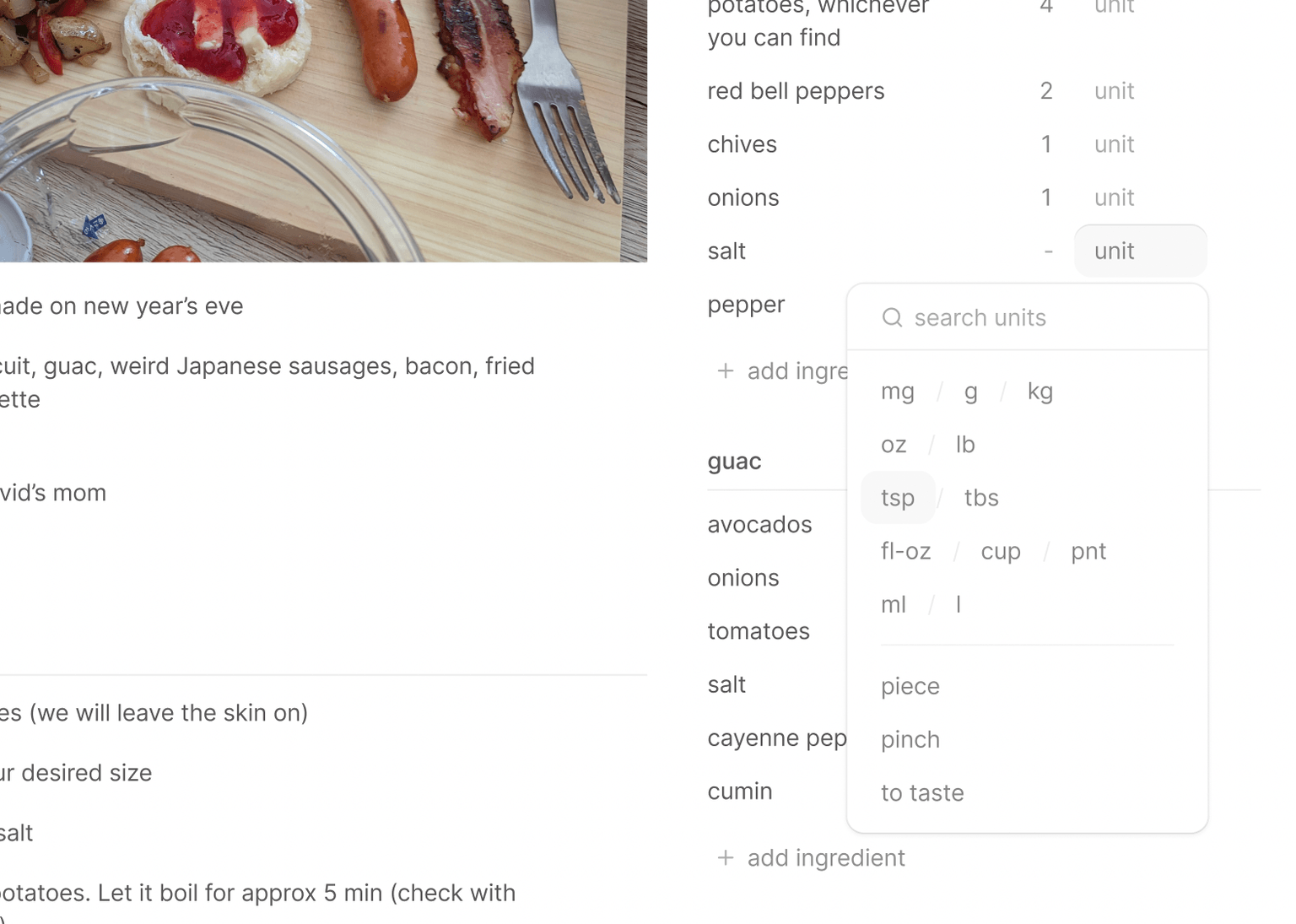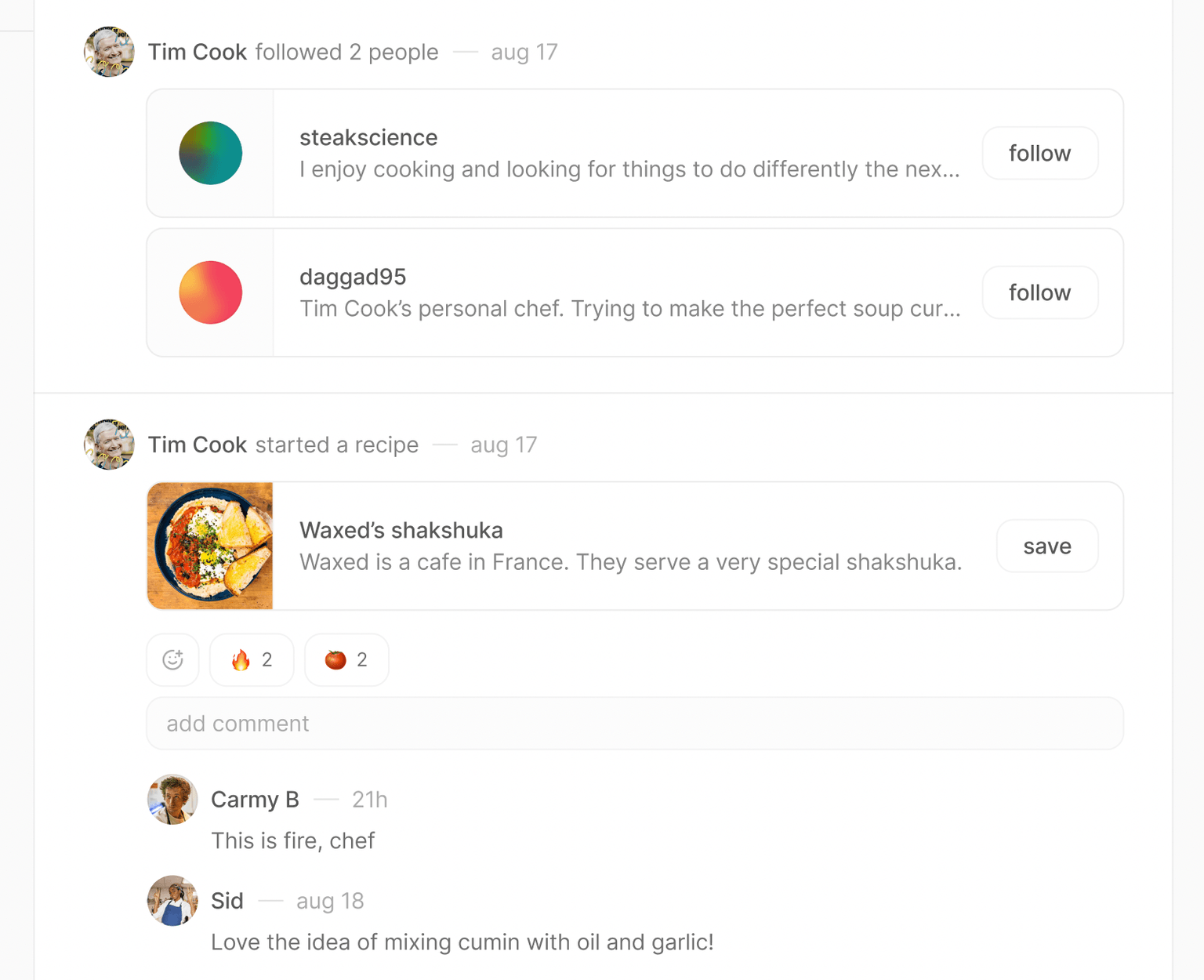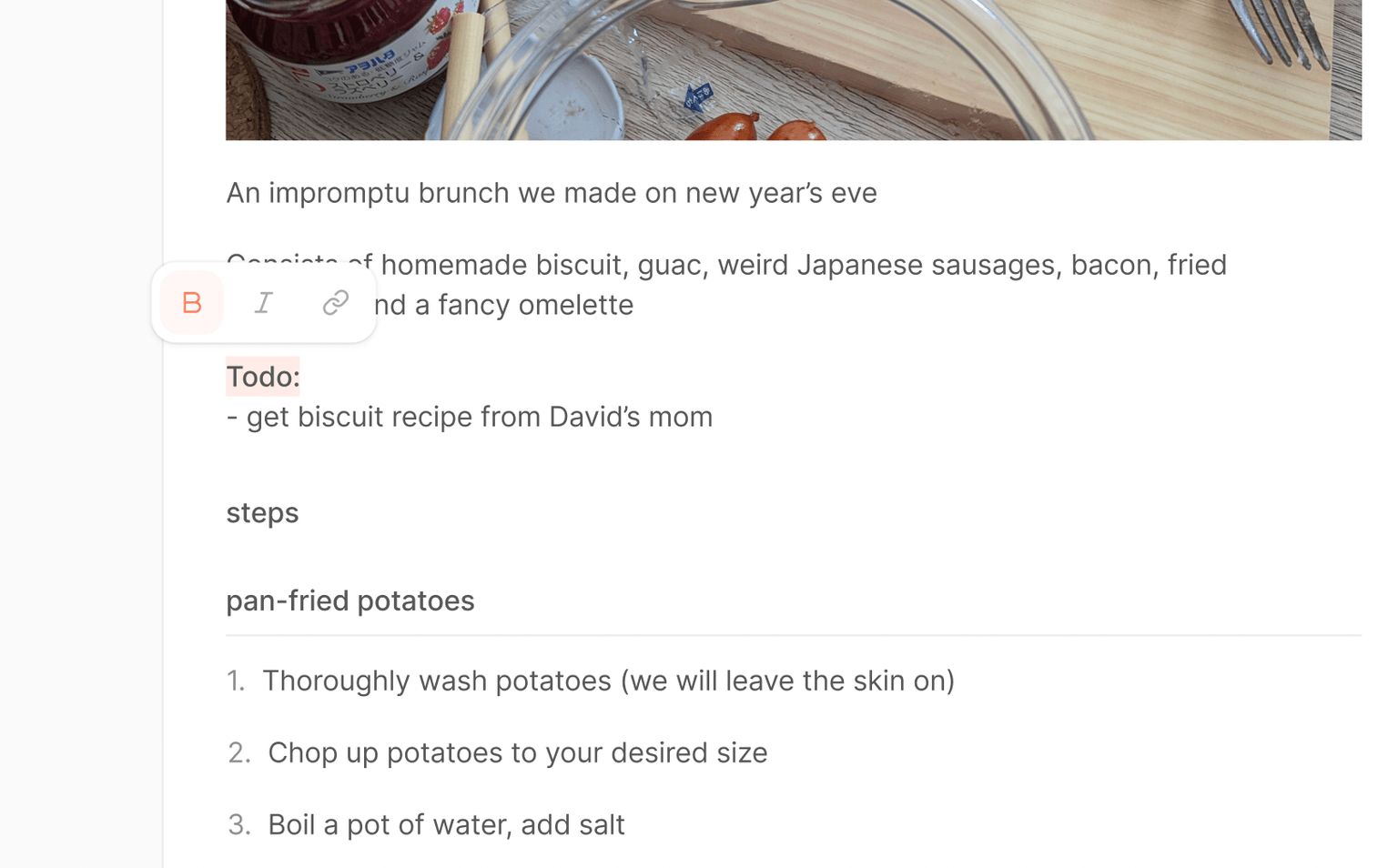Test Kitchen
A place to discover and create new recipes

Create new recipes
An editor designed specifically for crafting recipes.

Get inspired
Follow your friends. see what they’re cooking
and get inspired.

Make it yours
Take someone’s recipe and use it as a starting point. adjust ratios, swap out ingredients, and tweak it to your liking.


Test Kitchen is a project by 2 friends, made in our spare time. it is a work-in-progress.
See you in the kitchen!
(Coming soon-ish)